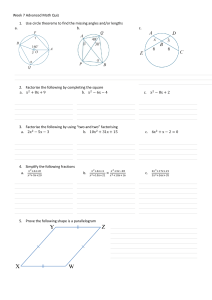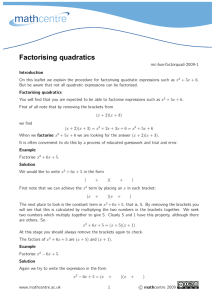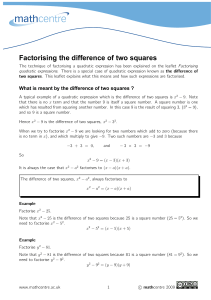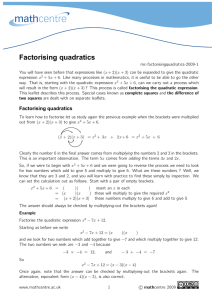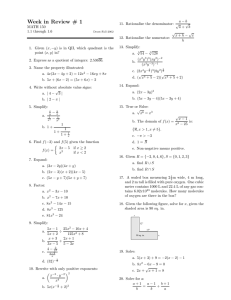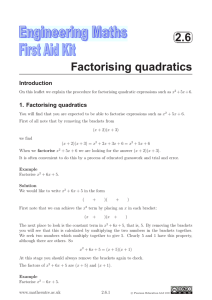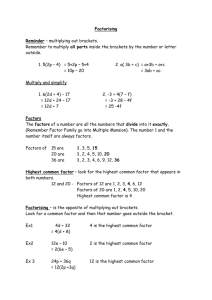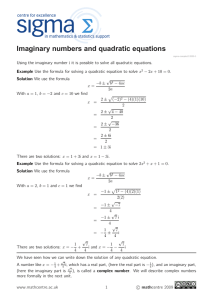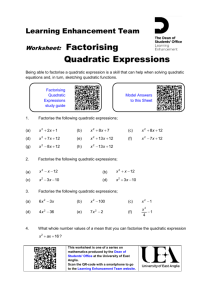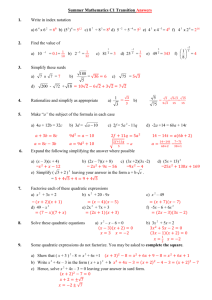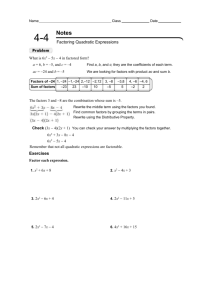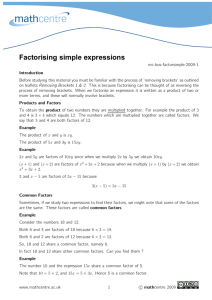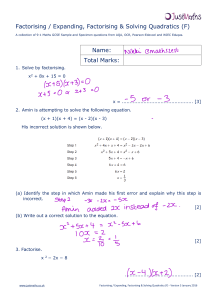Factorising complete squares
advertisement
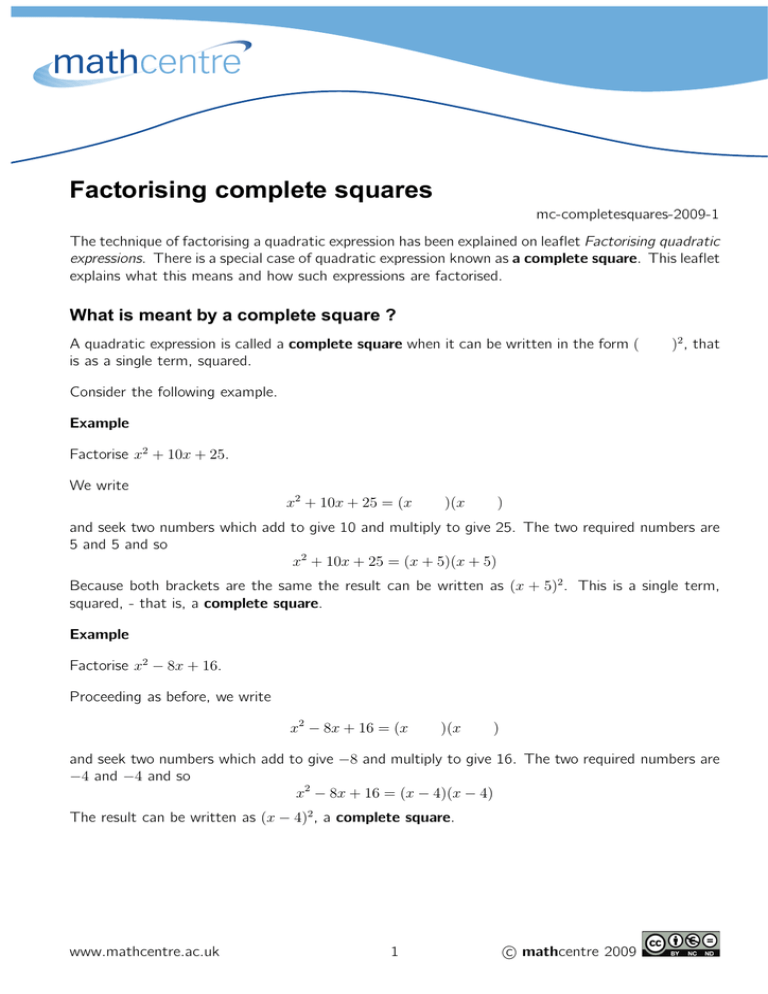
Factorising complete squares mc-completesquares-2009-1 The technique of factorising a quadratic expression has been explained on leaflet Factorising quadratic expressions. There is a special case of quadratic expression known as a complete square. This leaflet explains what this means and how such expressions are factorised. What is meant by a complete square ? A quadratic expression is called a complete square when it can be written in the form ( is as a single term, squared. )2 , that Consider the following example. Example Factorise x2 + 10x + 25. We write x2 + 10x + 25 = (x )(x ) and seek two numbers which add to give 10 and multiply to give 25. The two required numbers are 5 and 5 and so x2 + 10x + 25 = (x + 5)(x + 5) Because both brackets are the same the result can be written as (x + 5)2 . This is a single term, squared, - that is, a complete square. Example Factorise x2 − 8x + 16. Proceeding as before, we write x2 − 8x + 16 = (x )(x ) and seek two numbers which add to give −8 and multiply to give 16. The two required numbers are −4 and −4 and so x2 − 8x + 16 = (x − 4)(x − 4) The result can be written as (x − 4)2 , a complete square. www.mathcentre.ac.uk 1 c mathcentre 2009 More complicated examples can occur, for example when there is a number in front of the x2 . Work through the following example. Example Factorise 25x2 − 20x + 4. Note that 25x2 can be written as (5x)2 , a squared term. Note also that 4 = 22 . In this case, by inspection, 25x2 − 20x + 4 = (5x − 2)(5x − 2) The result can be written as (5x − 2)2 , a complete square. Do not worry if you have difficulty with this last example. The skill will come with practice. Exercises 1. Factorise the following. a) d) x2 + 18x + 81 b) 25x2 + 40x + 16 e) x2 − 4x + 4 c) 64x2 + 16x + 1 x2 − 22x + 121 Answers 1. a) (x + 9)2 d) (5x + 4)2 b) e) www.mathcentre.ac.uk (x − 2)2 (8x + 1)2 c) (x − 11)2 2 c mathcentre 2009
